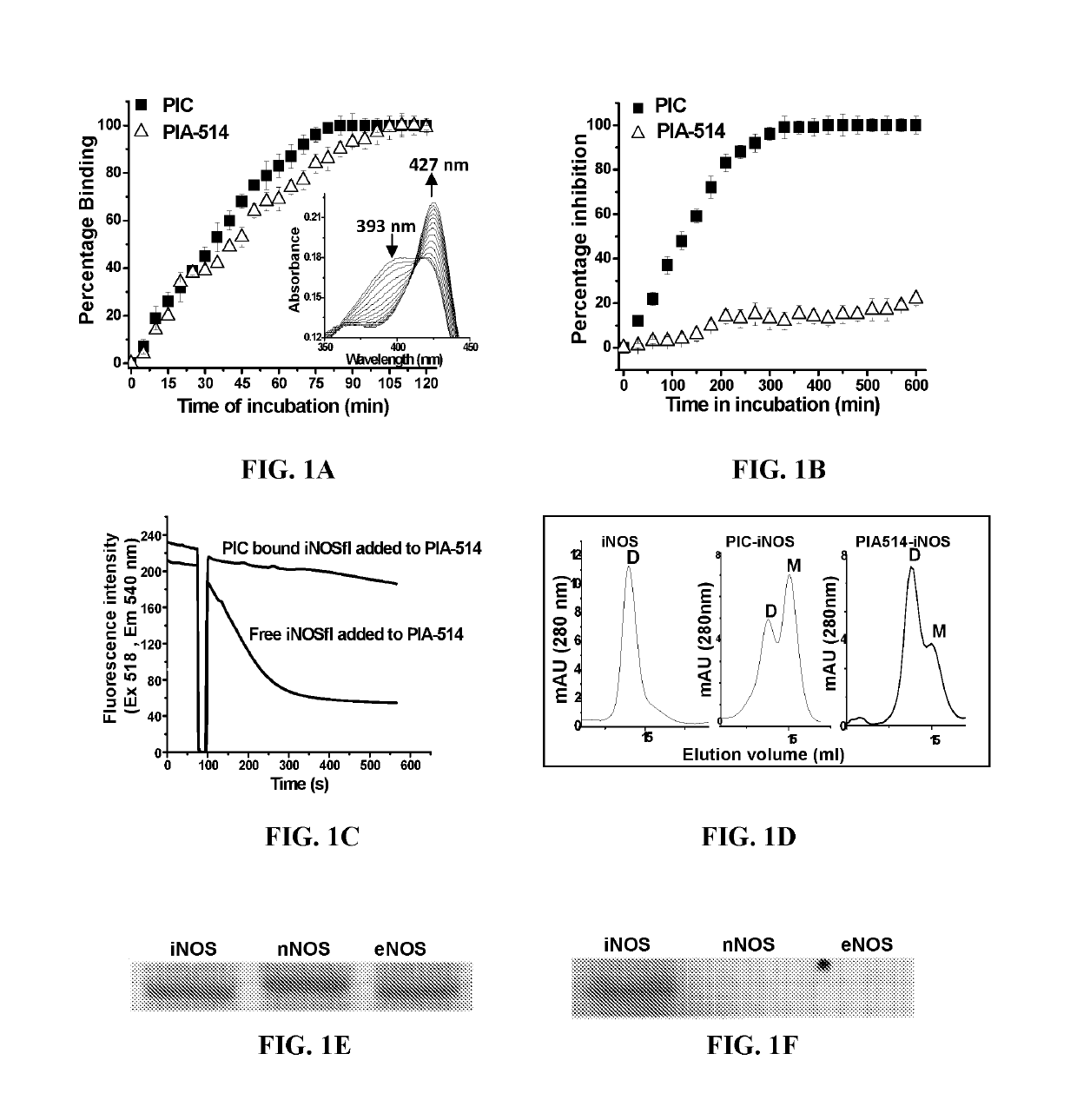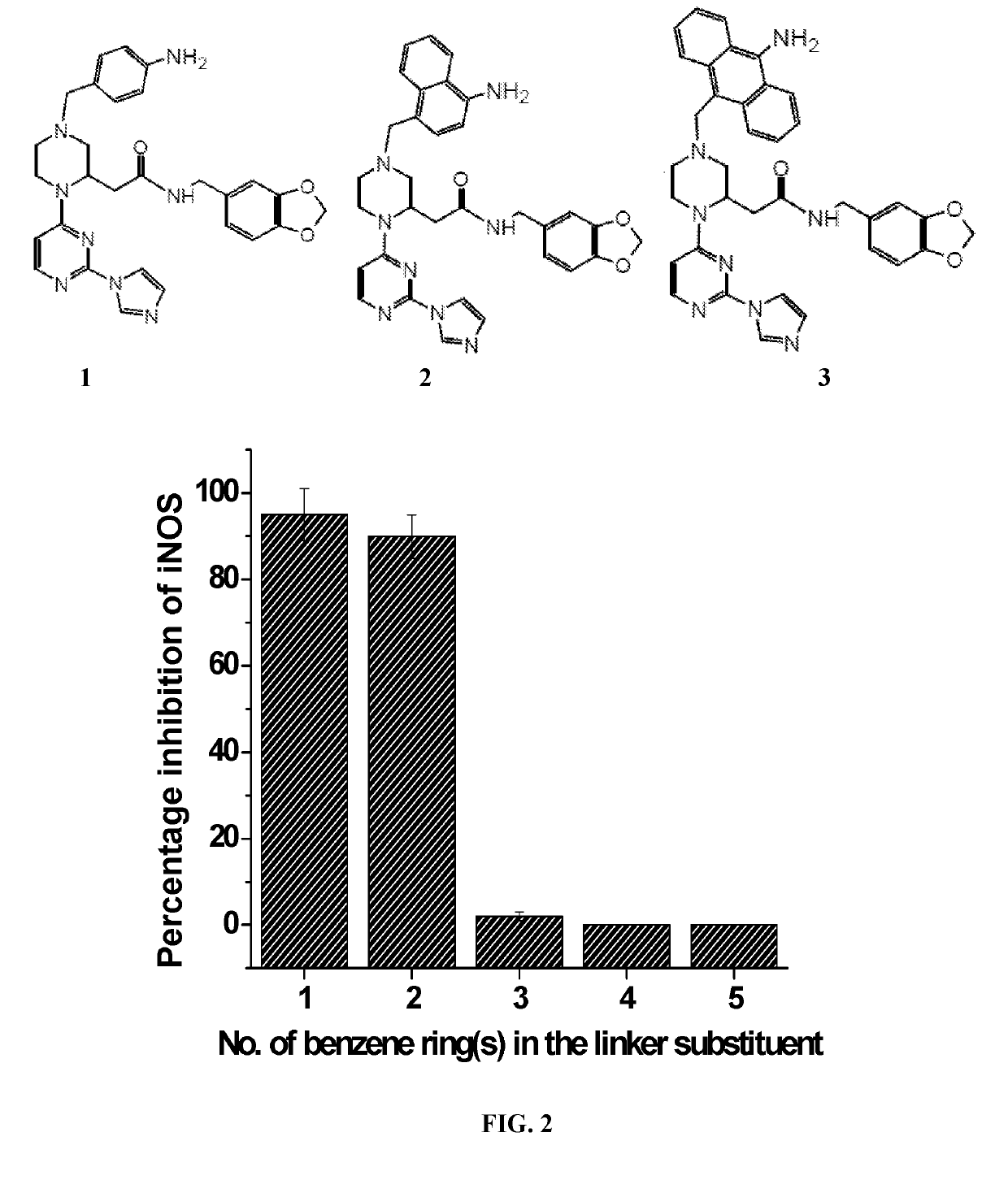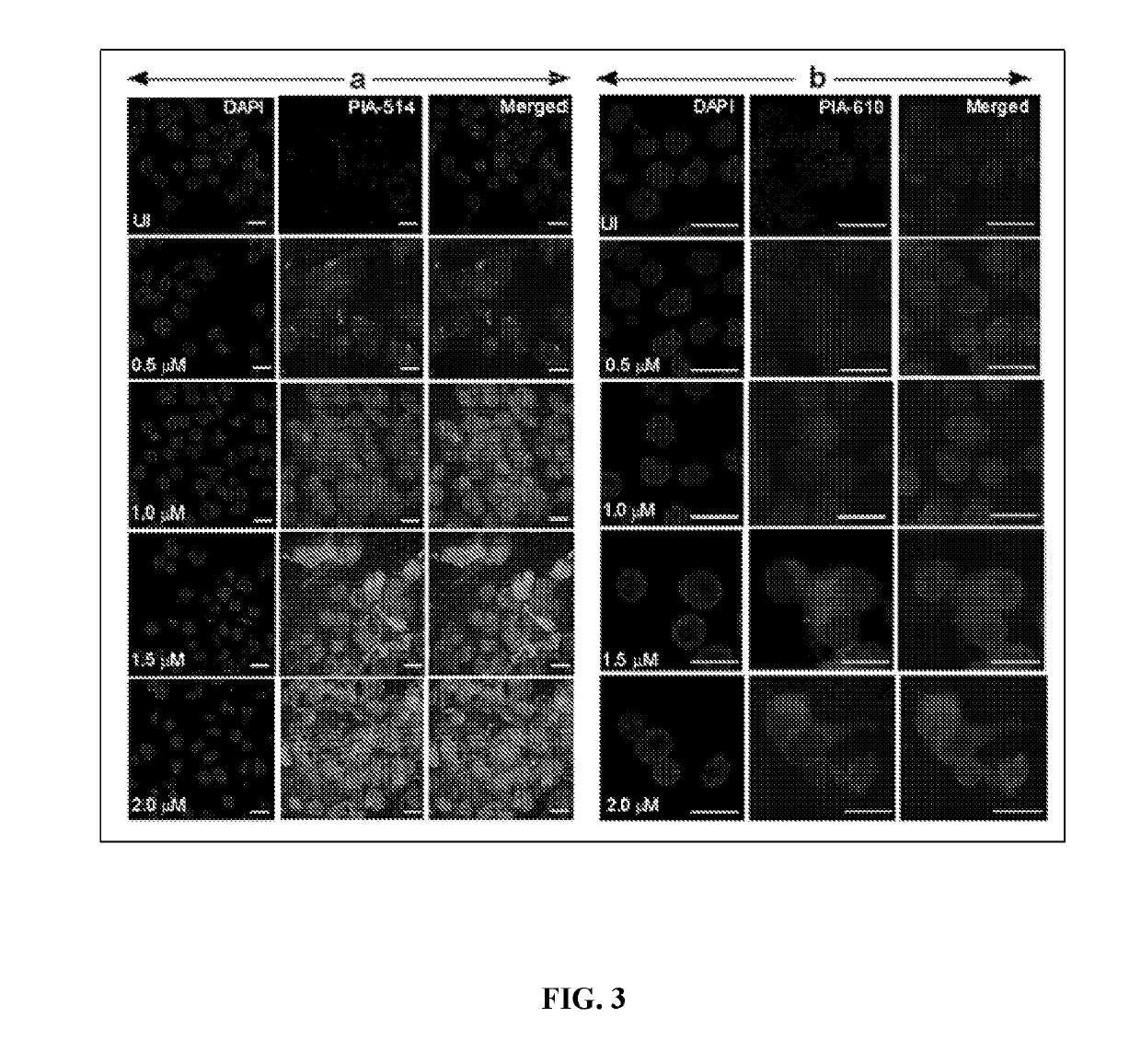Novel in-vivo probe for real time longitudinal monitoring of inducible nitric-oxide synthase in living cells and animals
a real-time longitudinal monitoring and in-vivo technology, applied in the field of in-vivo probes, can solve the problems of inability to sustain real-time imaging of the enzyme in both cells and animals, and the difficulty of real-time monitoring of inos expression in live cells and animals
- Summary
- Abstract
- Description
- Claims
- Application Information
AI Technical Summary
Benefits of technology
Problems solved by technology
Method used
Image
Examples
example 1
of In Vivo Probe of the Present Disclosure
example 1a
of Compound Represented by Formula IV
[0086](i) Preparation of Compound 2
[0087]A mixture of compound 1 (1.28 gm) and NaOH (0.43 gm) was suspended in water (6 ml) and heated to 60-70° C. until the solids were dissolved. Ethanol (7 ml) and methyl iodide (MeI) (0.63 ml) were added after the solution being cooled to about 30° C. The solution was then again heated to 50-60° C. for 20 min, and then cooled to room temperature on which, white solid precipitated from the solution and it was collected by filtration. The washings were acidified with acetic acid, and the excess solvent was removed in vacuum until precipitation of white solid was observed. After filtration, the combined precipitates were thoroughly washed with water and recrystallized from ethanol to yield compound 2.
[0088](ii) Preparation of Compound 3
[0089]A mixture containing compound 2 (500 mg) and POCl3 (2.5 ml) was heated at 80° C. under nitrogen atmosphere for 7 h. After completion of the reaction, the reaction mixture was...
example 1b
of Fluorescent Probe Represented by a Compound of Formula II
[0106]
[0107]A stock solution of compound IV was prepared by dissolving compound IV (6.4 mg) in DMSO (1 ml). A small amount of stock solution (31.25 μl, 0.2 mg of compound IV) was then taken in an Eppendorf tube. A stock solution of Alexa fluor-514 was prepared by dissolving Alexa Fluor-514 (1 mg) in 0.1 M NaHCO3 buffer solution (400 μl). From this stock solution, 121 IA (to maintain the 1:1 ratio of compound IV and Alexa Fluor in the reaction mixture) was added into the same Eppendorf tube under dark. The solution mixture was shaken for 12 h to complete the reaction (Checked by TLC). After the reaction, the solvent was removed by lyophilization method to obtain the compound of formula II.
PUM
 Login to View More
Login to View More Abstract
Description
Claims
Application Information
 Login to View More
Login to View More - R&D
- Intellectual Property
- Life Sciences
- Materials
- Tech Scout
- Unparalleled Data Quality
- Higher Quality Content
- 60% Fewer Hallucinations
Browse by: Latest US Patents, China's latest patents, Technical Efficacy Thesaurus, Application Domain, Technology Topic, Popular Technical Reports.
© 2025 PatSnap. All rights reserved.Legal|Privacy policy|Modern Slavery Act Transparency Statement|Sitemap|About US| Contact US: help@patsnap.com



